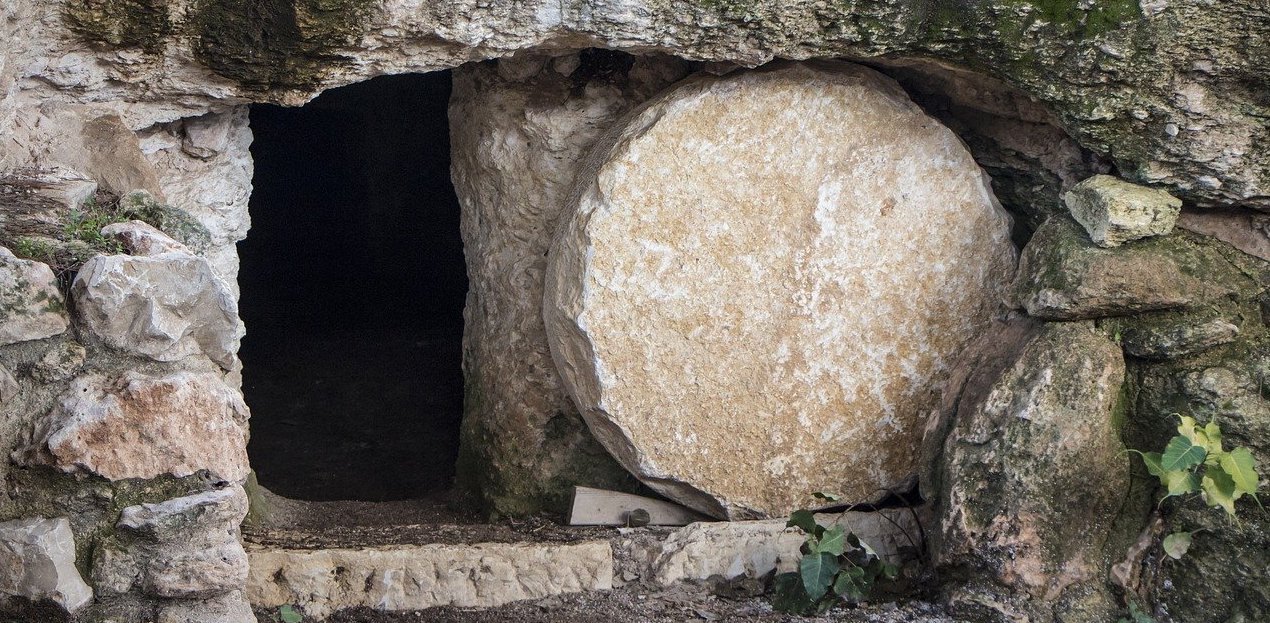
TC Perch, Pixabay
Christianity makes the most stupendous claim. Every Sunday many Christians recite these words: ‘The third day he rose again from the dead.’ But is it true? Can we possibly take it seriously in the twenty first century? Can a scientist believe it? It’s a vital question, for if it’s true, it affects our whole approach to life, death, and the hope of life after death.
First, let me dispose of the popular idea that science rules out the very possibility of resurrection in principle. No, science only tells us what normally happens. Scientists observe the processes of nature and draw general laws from their observations and experiments. Science cannot exclude one-off or extremely unusual events, which miracles are, and of which the resurrection is the supreme example. Indeed, the true scientific attitude is to be open-minded, and to ask, “What evidence is there?”
Evidence for the resurrection comes mainly from the four gospels and St Paul’s letters in the New Testament. Scholars generally agree that the gospels were written between the 60s and 90s AD, and report eyewitness testimony and traditions about Jesus which were circulating much earlier. Jesus was probably crucified in April 33 AD, so the gap between the events and their being written up is much less than that for an old soldier today reporting his Second World War experiences.
There are two aspects to the gospel evidence: (i) Jesus’ tomb was empty on the first Easter Day; and (ii) Jesus appeared alive to many people after his death. There is some disagreement in small details between the gospels. However, if all witnesses in a court case agreed in every detail you would suspect a conspiracy, so this disagreement in the gospels points to their being independent accounts from different sources rather than the fabrication of conspirators.
The best evidence comes from chapter 15 of Paul’s first letter to the Christians in Corinth, written in about 55 AD. Here Paul gives a list of witnesses to Jesus’ resurrection, including, last of all, himself.
Some significant points emerge from the evidence:
- The first witnesses were women. Sadly, women then were thought unreliable and were not allowed to testify in court. Hence, you just wouldn’t invent a story with women as your first witnesses.
- All Jesus’ twelve disciples, apart from Judas, were witnesses, as were Matthias who replaced Judas, Joseph, Matthias’ competitor for Judas’ place, and Jesus’ brother James.
- Paul recounts Jesus’ appearance to 500 people at one time, most of whom were still alive to testify when he was writing, a mere 22 years later.
- Finally, Paul himself met Christ on the Damascus road. This changed him completely, from ardent opponent of the faith to the most zealous disciple of all.
Introducing his list of resurrection appearances Paul says, ‘I delivered to you as of first importance what I also received, that Christ … was raised on the third day.’ When did Paul receive this information? Well, Paul was in Jerusalem three years after his conversion experience, and met Peter and James there. Given that his conversion was at most three years after Christ’s death, he must have received the information from Peter and James no more than six years after the event.
Alternative explanations for the evidence mostly involve a conspiracy, such as the disciples stealing the body. Indeed, that was the first theory at the time, deliberately circulated by the Jewish authorities. It implies that the disciples would have colluded in a lie.
Some died for their belief in the resurrection. While some people do die for false beliefs, nobody dies for something he knowsto be false, which would be the case for the disciples if they had invented the story. Moreover, surely someone would have broken ranks and squealed if they had conspired to spread a lie.
Scientists believe their theories on the basis of evidence. There is considerable evidence for Jesus’ resurrection. Many scientists have closed their minds to such evidence, historical evidence of testimony of witnesses. They suppose that the universe is a closed system in which only the rigid laws of physics operate and miracles are in principle impossible. But if we don’t close down beforehand what we think can happen, if we have open minds actually to look at the evidence in detail, if we are prepared to be surprised, then it becomes perfectly possible for a scientist to believe in the resurrection. I know many who do, some being amongst our most distinguished scientists. Indeed, having an open mind to follow where the evidence leads is a much more scientific attitude than deciding beforehand what you think can or can’t happen.
NEW: Be encouraged and equipped with a new bite-sized resource every month, including a short video, article and discussion questions. Join for free on Patreon for access to each month’s set of material, addressing a different topic/Bible passage each month AND two podcasts with experts on the same topic.
If you would like to support this work financially (£6/month) you will also receive these benefits:
- access to two live podcast recordings each month, where you can ask questions of experts in the topics covered and meet like-minded people.




